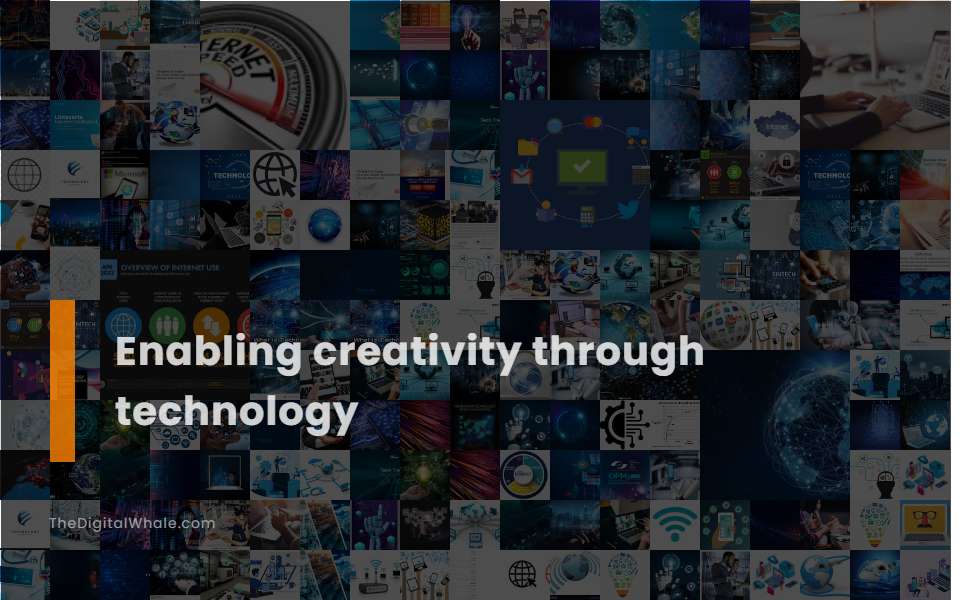Enabling Creativity Through Technology
If technology can be considered a distraction, then why is it helpful in the creative process? How can technology be used to boost creativity? Let's find out more about Enabling Creativity Through Technology.

Engagement with AI: Using AI tools for immersive and interactive learning experiences.
AI tools enhance immersive and interactive learning experiences by offering personalized learning paths, real-time feedback, and enhanced interaction through technologies like VR, AR, and interactive simulations, making learning more engaging, accessible, and effective. By utilizing these technologies, platforms such as the Digital Learning Institute demonstrate how AI is pushing the boundaries of modern education, ensuring that learners receive the most tailored and impactful education possible.
Collaboration on Google platforms: Utilizing Google Sites for easy sharing and collaboration on class projects.
Google Sites enables easy collaboration on class projects by allowing multiple students to work on a single website simultaneously, though only one person can edit a webpage at a time, making it ideal for group assignments and research projects. For more information on collaborative websites, you can explore the detailed insights provided on Enjoy Teaching, which offers a range of educational tools and strategies to enhance teamwork in classroom settings.
Experimentation and risk taking through coding: Using coding platforms like Code.org and Scratch for creative projects.
Using platforms like Scratch, educators can foster creativity through projects that encourage experimentation and risk-taking, such as the "Chatbot," "Ghostbusters," and "Create Your Own World" projects. These projects, highlighted on the Code Club website, allow learners to explore coding logic, variables, and interactive game design.
Interactive lessons: Implementing tools like Nearpod and Peardeck for engaging and creative learning.
Implementing tools like Nearpod and PearDeck enables interactive lessons that bring daily content to life, allowing students to participate in open-ended questions, collaborate with peers, and think creatively about the material they are learning. These tools integrate with platforms like Google Classroom and offer features such as real-time feedback, anonymous answer projection, and the ability to conduct lessons in both live and student-paced modes. For more insights, visit the website eSchool News to explore how technology can foster classroom creativity.
Open-ended assessments using online applications: Using platforms like Book Creator, Storybird, and Canva for creative assessments.
Utilizing platforms like Book Creator, Storybird, and Canva enables open-ended assessments that foster creativity by allowing students to express themselves through various media such as writing, illustrations, audio recordings, and collaborative projects, making the learning experience engaging and personalized. By exploring different mediums, students can push beyond traditional documentation methods and embrace innovative ways to showcase their understanding and skills. In particular, the use of Book Creator empowers educators and students to expand the boundaries of learning materials, ensuring a more immersive educational journey.
Related:
What is the UDS Foundation's adaptive equipment? What are current trends in Assistive Technology for People with Disabilities? Let's find out more about Assistive Technology for People with Disabilities.
Automating parts of the creative process: Technology streamlines tasks, freeing up time for idea generation and refinement.
Technology automates parts of the creative process, freeing up mental space and physical energy to focus on idea generation and refinement, allowing creatives to translate abstract thoughts into actionable ideas more efficiently. For more insights into how this balancing act is achieved, visit the Ogilvy article on Balancing Technology and Creativity for greater impact.
Generative AI for creative variations: Exploring variations of ideas in design, art, and writing using GenAI.
Generative AI revolutionizes the creative process by empowering users to transform their thoughts into diverse formats such as text, imagery, sound, and video through the use of prompts. This capability enhances the exploration of creative variations in design, art, and writing, allowing for the diversification and expansion of existing assets. By generating new content, generative AI enables artists, designers, and writers to experiment with different styles, genres, and forms. It plays a crucial role in democratizing creative work, making it accessible for non-experts to generate and refine creative assets. For more insights on this innovative technology, explore the transformative potential mentioned at the Generative AI Game Changer for Creative Production website.
Digital art platforms: Providing children with tools like Doodle Buddy for digital art creation.
Digital art platforms like Doodle Buddy, Tinkercad, and Procreate provide children with user-friendly tools for drawing, 3D modeling, and animation, fostering creative growth and self-expression through interactive and educational online experiences. For more information on these platforms, visit the Bark Blog to explore how these tools can enhance your child's artistic journey.
Storytelling applications: Using platforms like StoryJumper for creating and publishing digital storybooks.
StoryJumper is a user-friendly platform that enables students and users of all ages to create and publish their own digital storybooks. It offers pre-designed templates, the ability to add text, props, photos, and voice narrations, and options to convert digital books into hardcover or paperback formats, making it an excellent tool for fostering creativity and collaborative learning in the classroom. For more information, visit the StoryJumper website to explore the endless possibilities for interactive storytelling.
Mixed-Initiative Co-Creativity: Collaborating with GenAI models to enhance the creative process.
Mixed-Initiative Co-Creativity (MI-CC) is an innovative approach that involves collaborating with GenAI models to enhance the creative process, where human and computational agents share initiative on a continuum. Frameworks, such as Shneiderman's, suggest various roles for GenAI, including intelligent agents or collaborative teammates. This approach allows for the integration of AI-generated ideas and human creativity, potentially increasing the productivity and diversity of creative outputs. To explore more about this transformative concept, you can visit the ACM Digital Library.
Related:
Please answer the following question: How much is a bitcoin worth? What is the difference between bitcoin and other cryptocurrencies? Let's find out more about Bitcoin and Other Cryptocurrencies.
